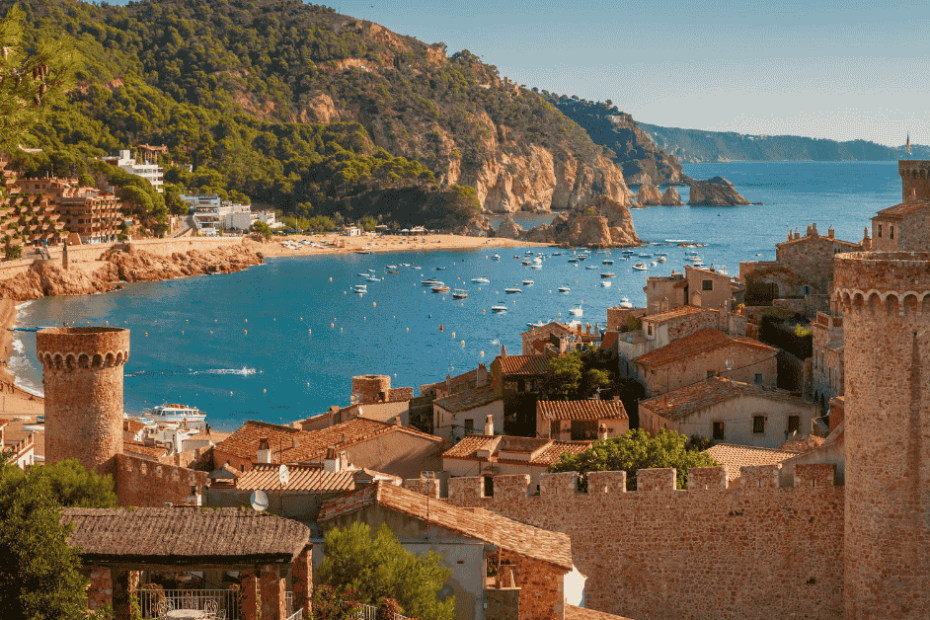Spain’s a treasure trove of vibrant cities, stunning landscapes, and rich history, making it the perfect destination for a week-long adventure. Whether you’re a foodie, a history buff, or just looking to soak up some sun, Spain’s got something for everyone.
In this 7-day itinerary, I’ll guide you through some of the country’s most iconic spots, from the bustling streets of Madrid to the enchanting alleys of Barcelona. Get ready to immerse yourself in the unique culture, savor delicious cuisine, and create unforgettable memories.
Key Takeaways
- Diverse Cultural Experiences: This 7-day itinerary covers a variety of Spain’s most iconic cities, including Madrid, Toledo, Seville, Granada, Valencia, and Barcelona, offering a rich blend of history, architecture, and local culture.
- Efficient Travel: The article provides practical tips for transportation, including high-speed trains and buses, ensuring a smooth journey between destinations.
- Must-See Attractions: Key landmarks such as the Royal Palace in Madrid, Seville Cathedral, the Alhambra in Granada, and Sagrada Familia in Barcelona are highlighted, offering readers a comprehensive guide to Spain’s top sights.
- Local Cuisine: Guidance on where to savor traditional Spanish dishes like tapas in Madrid, paella in Valencia, and Catalan seafood in Barcelona enhances the culinary aspect of the trip.
- Unique Experiences: Activities such as a flamenco show in Seville, a boat ride in Retiro Park, and a tour of the City of Arts and Sciences in Valencia provide memorable, immersive experiences in Spanish culture.
Day 1: Madrid – The Heart of Spain

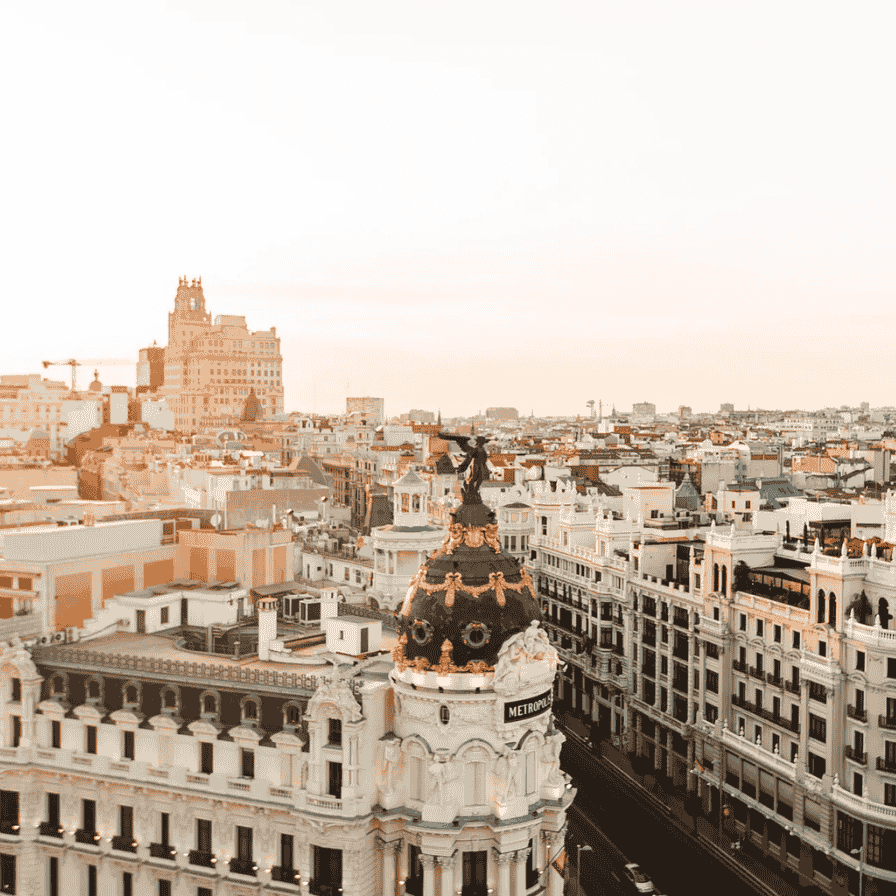
I’ll devote the first day of the 7-day itinerary to exploring Madrid, a city brimming with culture and history.
Morning: Exploring the Royal Palace
I start the day by visiting the Royal Palace of Madrid, the official residence of the Spanish royal family. This grand palace is a must-see, offering insights into Spain’s rich history and architecture. The palace boasts over 3,400 rooms filled with artworks, luxurious furniture, and stunning tapestries.
To avoid long lines, I recommend reserving visits to the palace online in advance. Once inside, I’ll wander through the grand halls, the Throne Room, and the Royal Armory. If time permits, I might catch the changing of the guard ceremony, which occurs on Wednesdays and Saturdays. Remember, photography is restricted in certain areas.
Afternoon: Strolling Through Retiro Park
After the palace, I’ll head to Retiro Park, a 350-acre green oasis in central Madrid. It’s an ideal spot for a leisurely stroll or a peaceful picnic. Within the park, there are multiple attractions, including the Crystal Palace, which hosts various art exhibitions.
I’ll take a boat ride on the park’s lake, enjoying the serene views and the Monument to Alfonso XII. The park also houses the Rosaleda garden, featuring over 4,000 roses, and the Fountain of the Fallen Angel, one of the few monuments dedicated to Lucifer. I’ll explore these landmarks while soaking in the tranquil atmosphere.
Evening: Tapas at Mercado de San Miguel
I’ll end the day at Mercado de San Miguel, a bustling market known for its vibrant culinary offerings. Here, I’ll sample an array of local tapas and drinks. The market features over 30 vendors offering traditional Spanish dishes like jamón ibérico, patatas bravas, and fresh seafood.
It’s a fantastic place to experience Madrid’s food culture in one spot. I’ll pair these delights with a glass of Spanish wine or sherry. The lively ambiance and diverse food options make it a perfect conclusion to my first day in Madrid.
Day 2: Madrid to Toledo – A Journey Back in Time
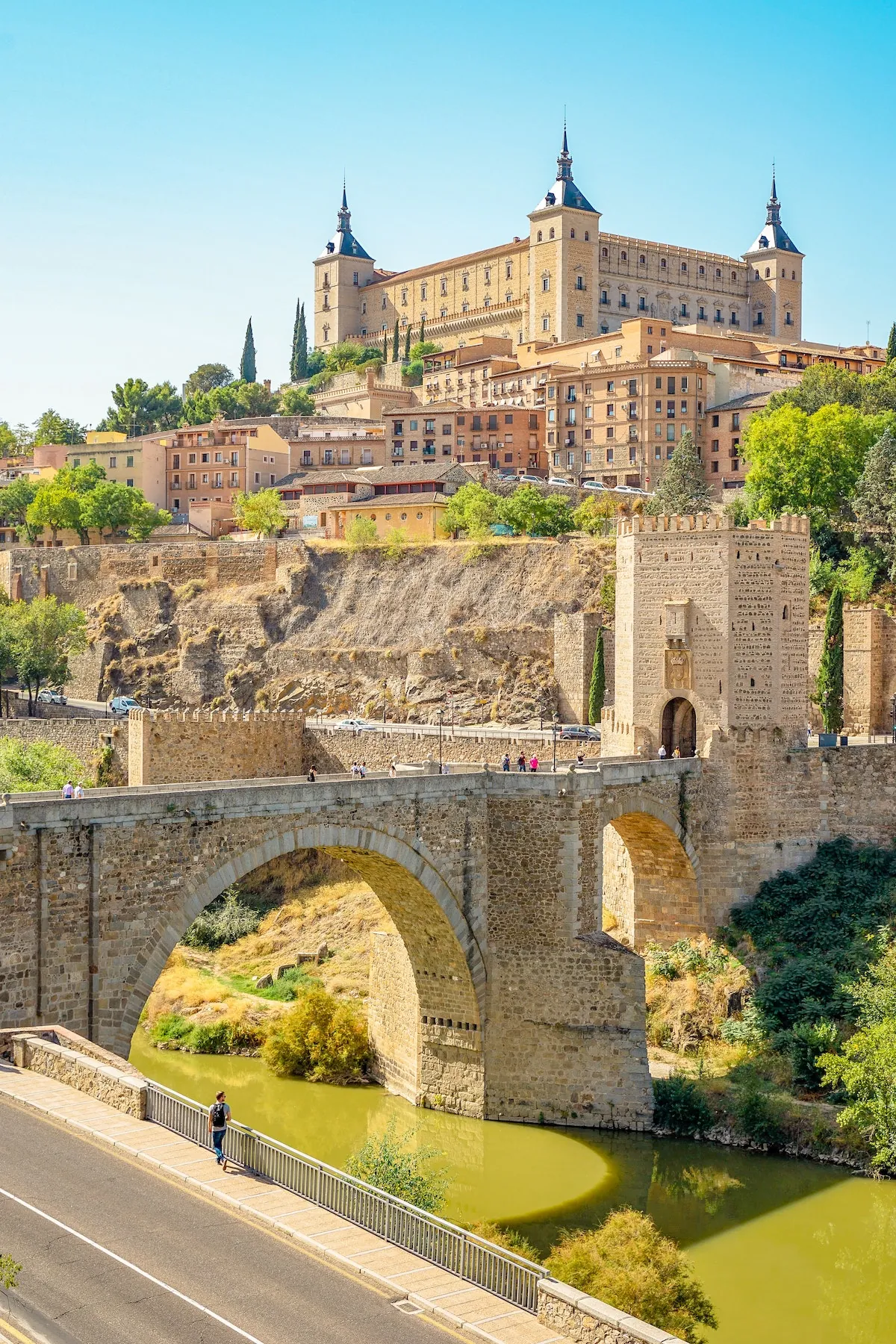
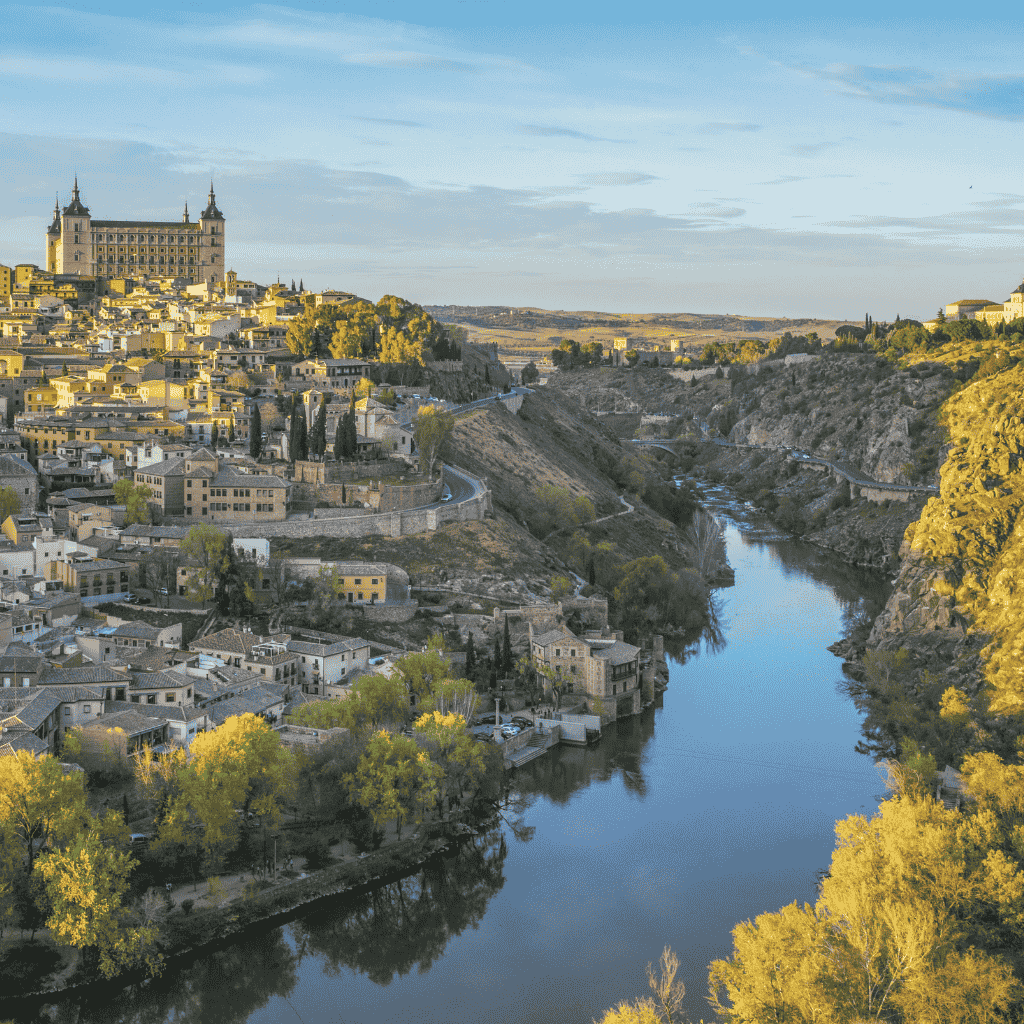
Morning: Day Trip Departure to Toledo
Day 2 starts with a trip from Madrid to Toledo, a city rich in history. From Puerta de Atocha station, the train ride takes about 35 minutes. Round-trip tickets cost approximately €26 and can be purchased at the station or online. If you prefer a bus, it takes around 1 hour and costs about €10.
Arriving in Toledo, I’m struck by the city’s medieval charm. Narrow, winding streets and stone walls transport me to another era. My first stop is the Toledo Cathedral.
Afternoon: Visiting the Cathedral and Jewish Quarter
The Toledo Cathedral, a medieval Gothic masterpiece, amazes me with its architecture and history. It’s one of Toledo’s top sites, and tickets must be purchased on-site. The interiors, with their intricate details and stunning stained glass, are a sight to behold.
Next, I wander through the Jewish Quarter. This area, with its historical significance, features several synagogues and narrow streets. The Synagogue of Santa María la Blanca and El Tránsito provide a window into the city’s diverse cultural past.
Evening: Return to Madrid
After a full day in Toledo, I head back to Madrid by train or bus. For dinner, I choose Mercado de San Miguel. This market is a foodie’s paradise with a wide array of tapas and cocktails. I indulge in delicious dishes, soaking in the lively atmosphere.
Each moment in Toledo feels like a journey back in time, offering a deeper understanding of Spain’s rich history and culture.
Day 3: Madrid to Seville – Flamenco and History
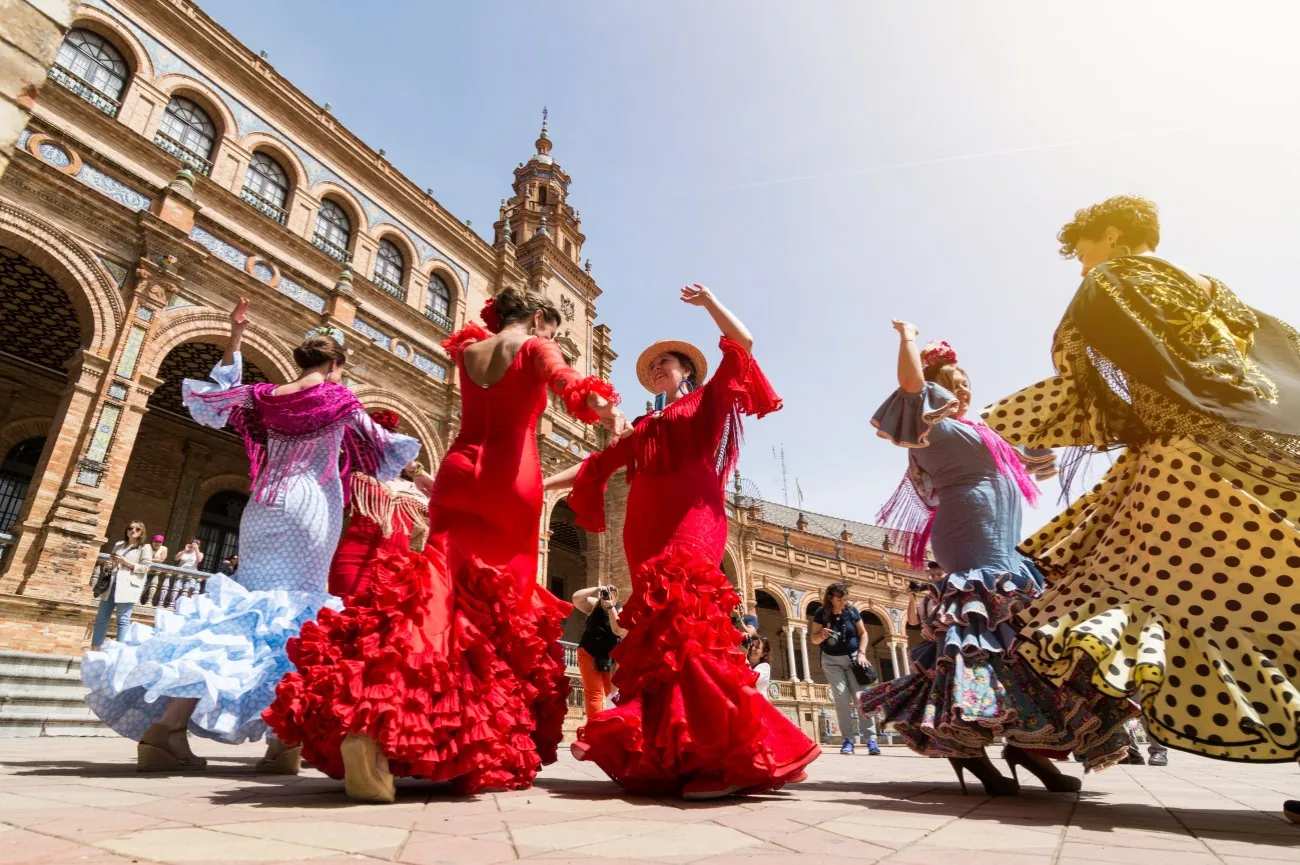
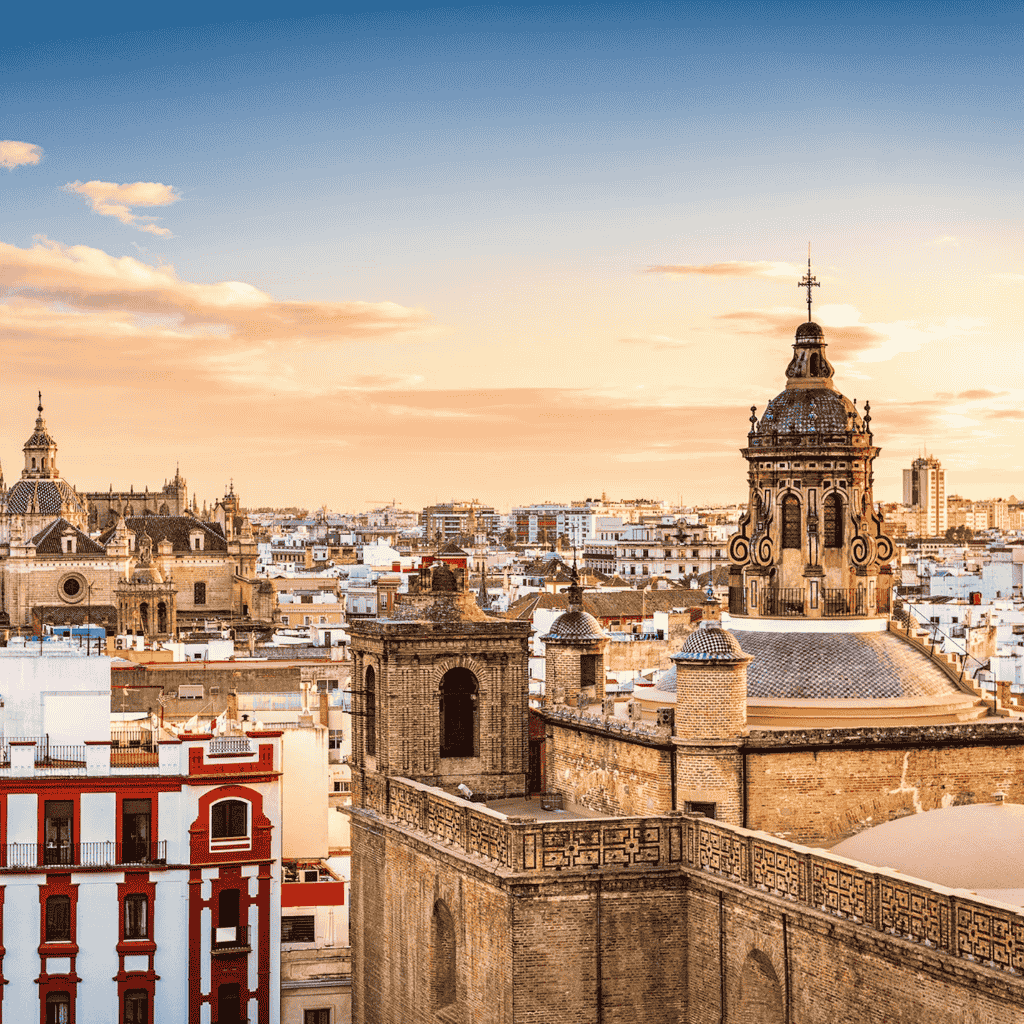
Day 3 starts with a journey to Seville, offering an exciting blend of flamenco and historical exploration.
Morning: AVE Train to Seville
I boarded the AVE train from Madrid to Seville in the morning. The AVE train is known for its speed and comfort, making it a convenient choice for a long-distance journey. Traveling at speeds up to 193 mph, it took approximately 2.5 hours to reach Seville. The spacious seating and onboard services ensured a comfortable trip. I enjoyed the scenic views of the Spanish countryside, catching glimpses of picturesque villages and landscapes. Arriving in Seville, I was ready to explore the city’s rich cultural history.
Afternoon: Exploring Seville Cathedral and Giralda Tower
Upon arrival, I made my way to Seville Cathedral and Giralda Tower. The Seville Cathedral, one of the largest Gothic cathedrals in the world, amazed me with its intricate architectural details and grandiosity. I took some time to explore its vast interior, marveling at landmarks like the altarpiece of the Capilla Mayor and the tomb of Christopher Columbus.
After that, I climbed the Giralda Tower. Originally an Islamic minaret, it now serves as the cathedral’s bell tower. The climb was relatively easy thanks to its ramps instead of stairs. From the top, I enjoyed panoramic views of Seville’s historic center. The combination of Gothic and Renaissance elements in the tower stands as a testament to Seville’s rich architectural heritage. The afternoon spent exploring these historic sites deepened my appreciation for Seville’s cultural significance.
Evening: Flamenco Show at Casa de la Memoria
In the evening, I headed to Casa de la Memoria for an authentic flamenco experience. Known for its intimate atmosphere and high-quality performances, this venue allowed me to witness the passion and artistry of flamenco up close. The show captivated me with its dramatic guitar playing, soulful singing, and intense dancing. Each performer brought their own unique style to the stage, showcasing the diverse elements of flamenco traditions.
The venue’s historical setting added to the authenticity of the experience. Housed in an 18th-century building, Casa de la Memoria provides a sense of stepping back in time, further immersing visitors in the cultural history of Seville. After the show, I enjoyed a leisurely stroll through the city, reflecting on the day’s blend of history and culture.
Day 4: Seville – Discovering Andalusia

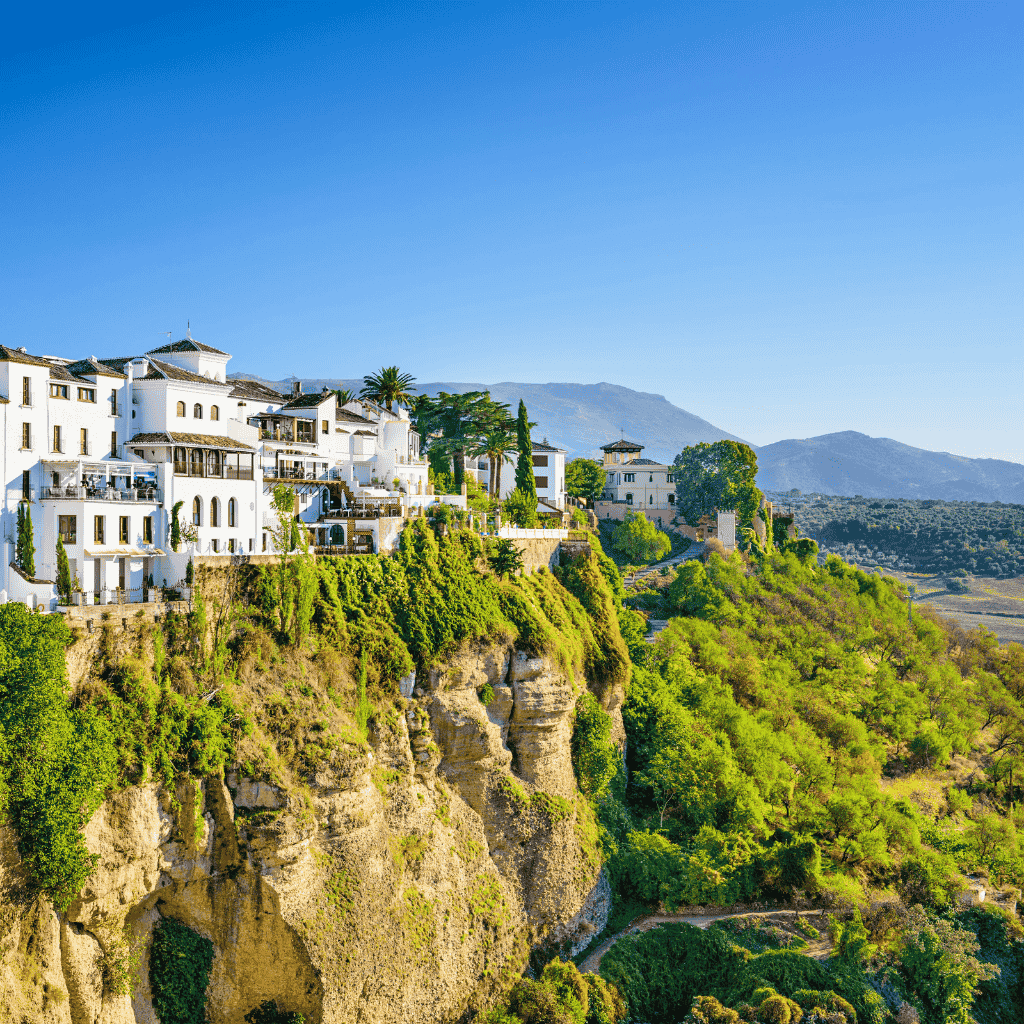
Seville has rich history, stunning architecture, and vibrant culture. It offers travelers countless memorable experiences in one day.
Morning: Visit the Real Alcázar
Start your day by visiting the Real Alcázar, a UNESCO World Heritage Site that showcases a mix of Moorish and Gothic styles. Built originally by Moorish Muslim kings, the palace boasts intricate tile work, lush gardens, and stunning arcades.
Inside, you can explore different rooms, each meticulously decorated with detailed mosaics and elegant archways. The Ambassadors Hall is truly breathtaking. The gardens, with their fountains and aromatic plants, offer a serene escape. The Patio de las Doncellas courtyard exemplifies Moorish architecture at its finest. This iconic location has also served as a filming site for popular series like Game of Thrones, adding an extra layer of intrigue.
Afternoon: Relaxing at Plaza de España
After spending the morning at Real Alcázar, head over to Plaza de España, an architectural marvel built for the 1929 Ibero-American Exposition. It features stunning tile work, picturesque bridges, and beautiful fountains.
Stroll along the semi-circular building’s colonnades and admire the exquisite tile mosaics representing Spain’s provinces. You’ll often see artists sketching or painting the scenic views. Climb one of the plaza’s towers for a panoramic view of Maria Luisa Park. You could even rent a rowboat to glide along the canal. This is also a great spot for people-watching or simply unwinding.
Evening: Dinner at a Traditional Andalusian Restaurant
When evening comes, it’s time to indulge in Andalusian cuisine. Seville is renowned for its tapas culture, so head to a traditional restaurant to sample local dishes. Enjoy patatas bravas, tortilla española, and gambas al ajillo.
Eslava stands out for its fabulous food and wine. This local favorite offers an unforgettable dining experience with its innovative takes on traditional Andalusian recipes. Don’t miss the honey-coated pork ribs or the egg with boletus cake. The warm, welcoming atmosphere provides the perfect ending to a day of exploration in Seville.
Day 5: Seville to Granada – The Alhambra Awaits
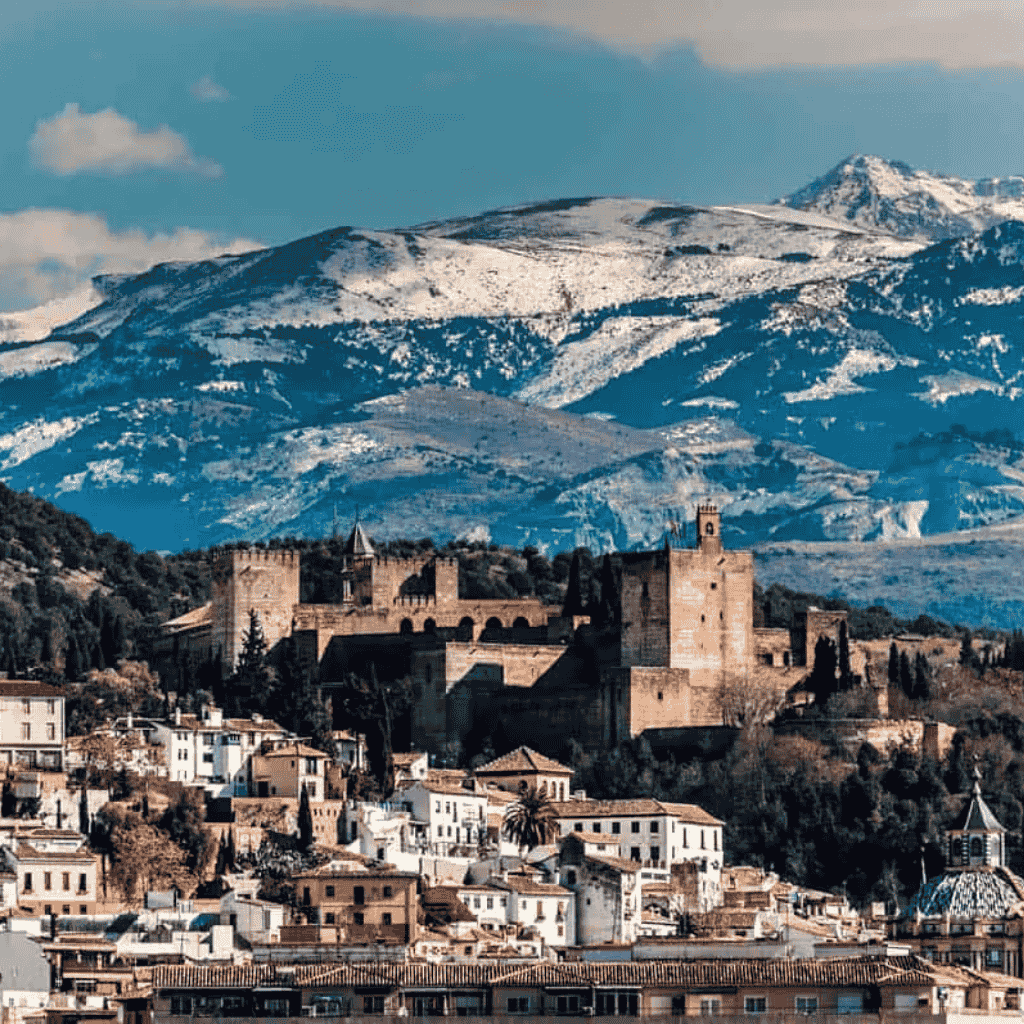
Morning: Travel to Granada
Day 5 kicks off with an early travel to Granada. High-speed trains and buses both offer convenient options, making the journey smooth. I recommend taking the high-speed train, which takes about 2.5-3 hours, offering comfortable seating and scenic views. Choose a departure around 8 AM to maximize your day in Granada. Upon arrival, check into your hotel and have a light snack before the day’s adventure begins.
Afternoon: Guided Tour of The Alhambra
The Alhambra, a UNESCO World Heritage site, is the centerpiece of the day. Featuring impressive Moorish architecture, it stands as a testament to Granada’s historical significance. I suggest booking a guided tour in advance, ensuring you don’t miss key highlights. Walk through the Nasrid Palaces, admire the intricate tile work, and explore the Generalife gardens. Tours typically last around 3 hours, offering ample storytelling and historical context. Remember to take water and wear comfortable shoes for this extensive tour.
Evening: Exploring the Albayzín Neighborhood
In the evening, Albayzín awaits with its narrow, winding streets and white-washed buildings. It’s one of Granada’s most charming areas, rich in history and culture. Start with a visit to Mirador de San Nicolás, which offers stunning views of the Alhambra against the backdrop of the Sierra Nevada mountains. Wander through the cobbled streets, exploring tiny shops that sell local crafts and souvenirs. For dinner, stop by one of the many traditional tapas bars, such as Bodegas Castañeda, to sample local delicacies and soak in the vibrant atmosphere.
Day 6: Granada to Valencia – Beachside Charm
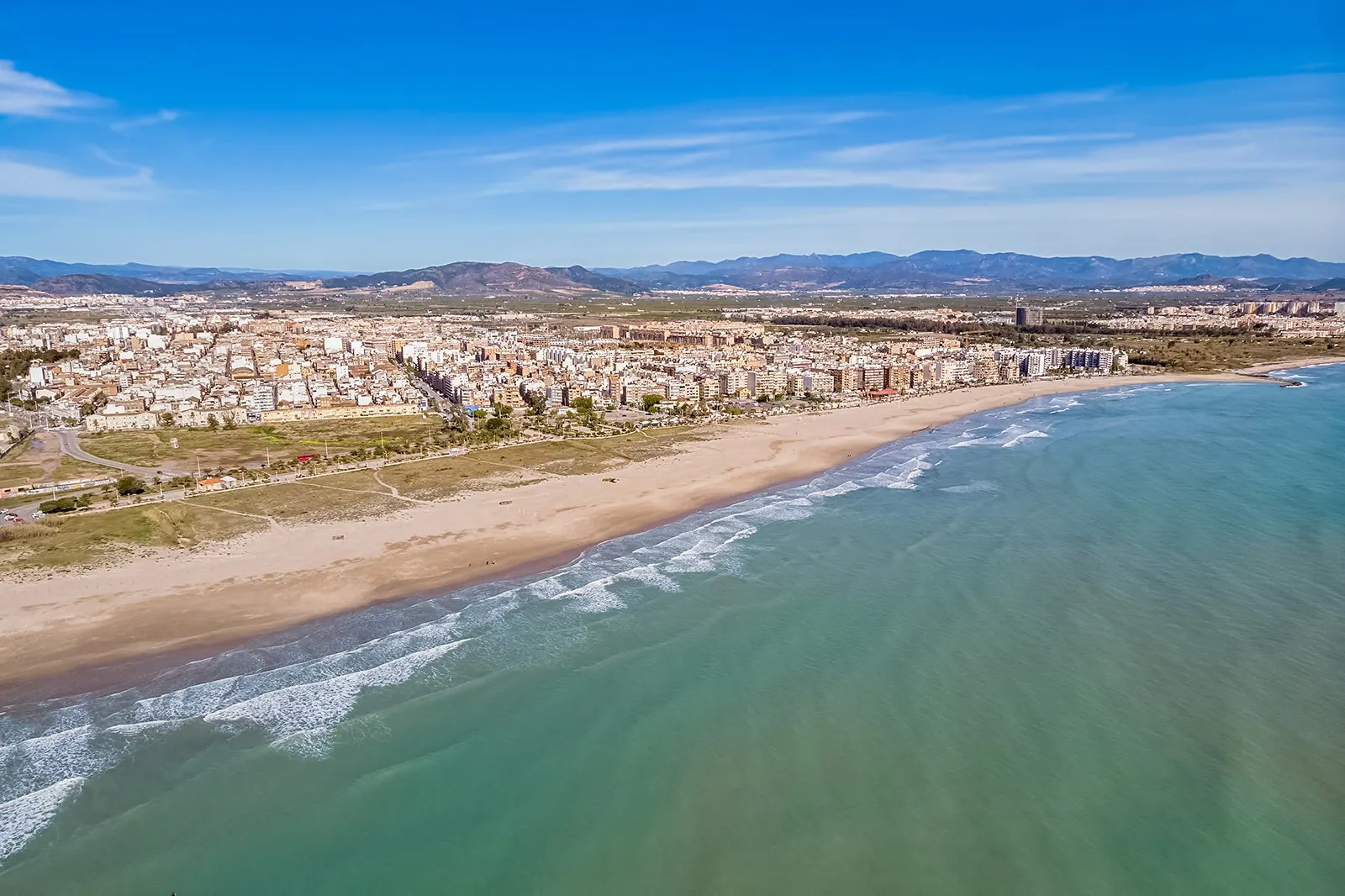
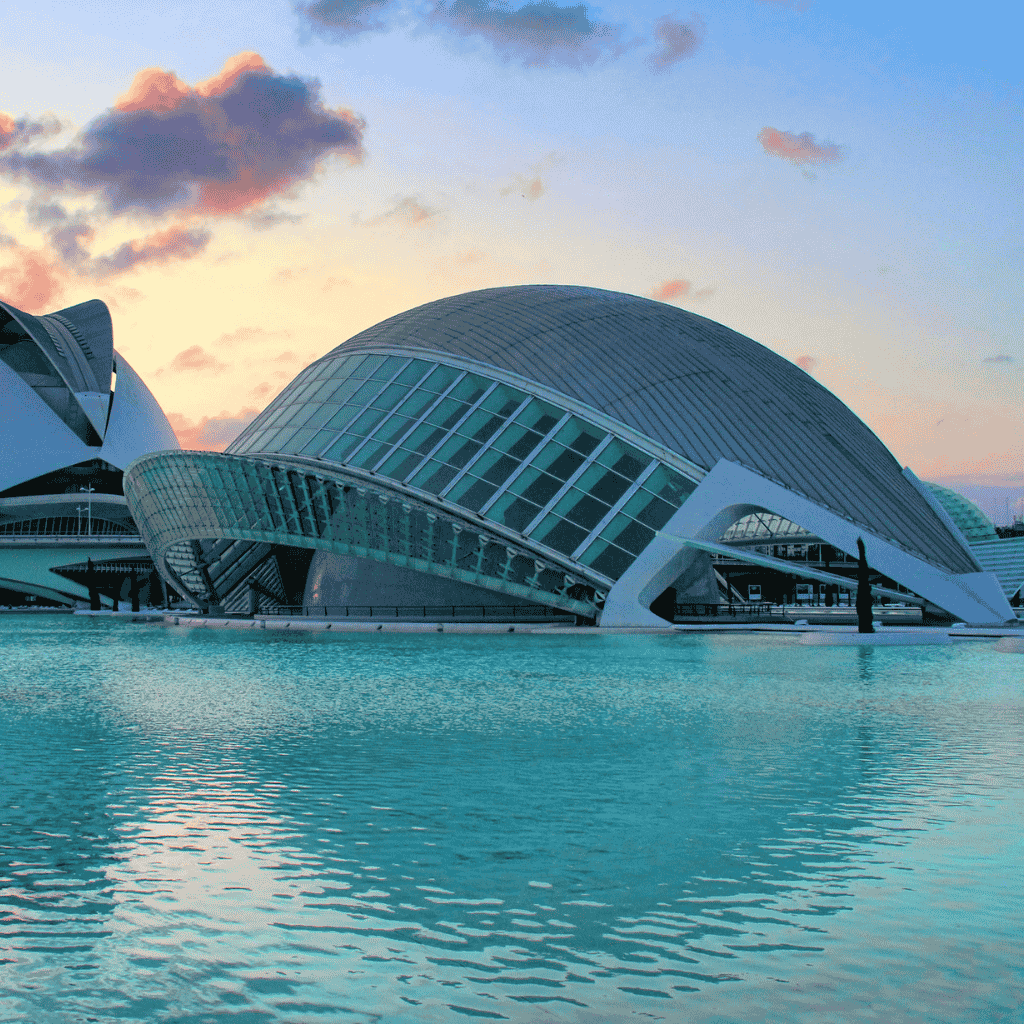
Travelers can find a perfect blend of cultural exploration and beach relaxation on Day 6, journeying from Granada to Valencia.
Morning: Journey to Valencia
I started my morning trip to Valencia by catching a high-speed train from Granada. The journey of about 3 hours provided a swift and comfortable experience. Another option is the bus, which typically takes 4-5 hours but offers scenic vistas along the way.
Afternoon: Visiting the City of Arts and Sciences
Upon arriving in Valencia, I headed straight to the City of Arts and Sciences, a masterpiece designed by Santiago Calatrava. My first stop was the Hemisfèric, an IMAX cinema and planetarium where I enjoyed an immersive visual experience. Next, I explored the Science Museum, filled with interactive exhibits that made learning about science fun and engaging. Finally, I visited the Oceanogràfic, Europe’s largest aquarium, marveling at diverse marine life across different habitats.
Evening: Paella Dinner by the Beach
In the evening, I went to Malvarrosa Beach, known for its vibrant Mediterranean ambiance. I enjoyed a traditional paella dinner at a local beachside restaurant, savoring the rich flavors of this iconic Spanish dish. The sunset over the Mediterranean Sea added a picturesque ending to my day, creating a serene and memorable experience.
Day 7: Valencia to Barcelona – The Grand Finale
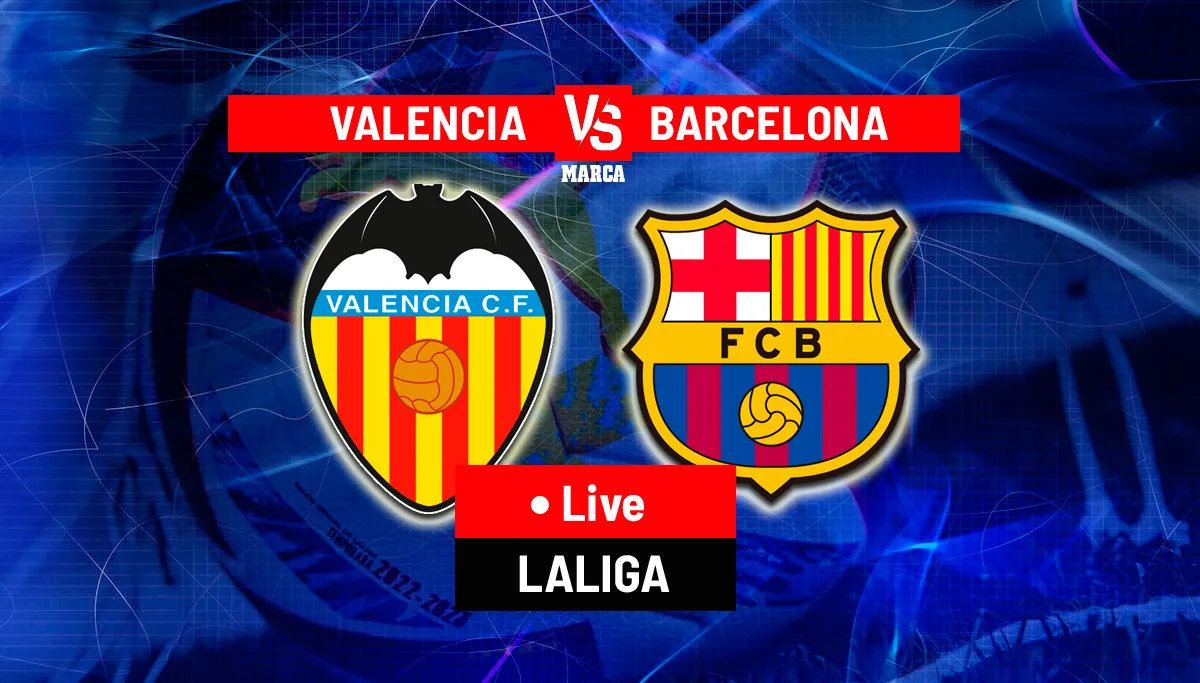
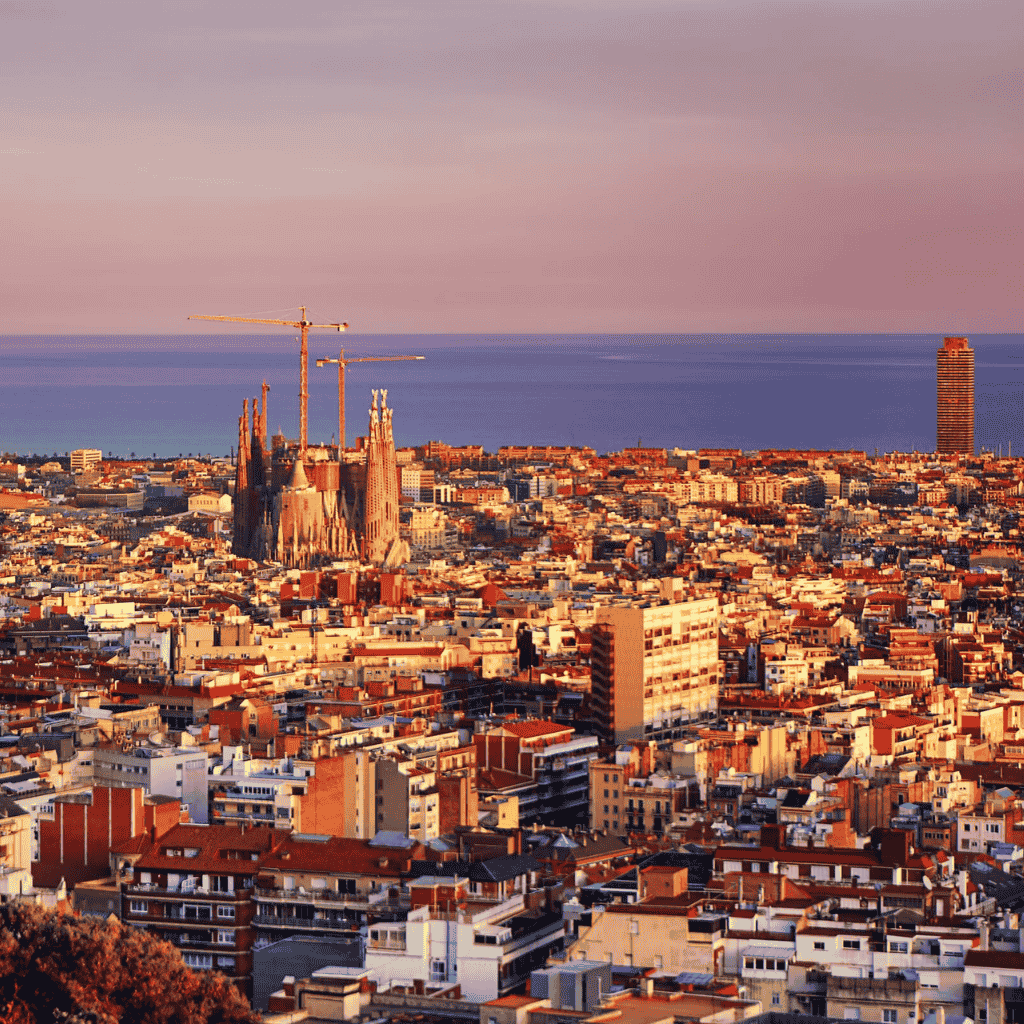
Concluding the adventure in Spain, travelers head from Valencia to Barcelona for a memorable finale.
Morning: Onward to Barcelona
Begin the day by taking an early high-speed train from Valencia. The journey to Barcelona is approximately 3 hours. Upon arrival, take a moment to admire Sants Station, one of the city’s main transit hubs. From there, head to your accommodation to drop off your luggage.
Afternoon: Touring Sagrada Familia and Gothic Quarter
Spend the afternoon exploring Barcelona’s iconic Sagrada Familia. Designed by Antoni Gaudí, this basilica is a UNESCO World Heritage Site and still under construction. Entry requires advance tickets, which can be purchased online to avoid long queues.
After the Sagrada Familia, walk through the Gothic Quarter. This area is rich in medieval history and narrow, winding streets. Key landmarks include the Barcelona Cathedral and Plaça del Rei. Nearby, the Picasso Museum offers insight into the artist’s formative years in Barcelona.
Evening: Farewell Dinner at La Barceloneta
For the final evening, enjoy dinner in La Barceloneta, a charming seaside neighborhood known for its seafood restaurants. Opt for a traditional Catalan meal with dishes like fideuà or suquet de peix. Dining with a view of the Mediterranean Sea offers a perfect ending to a week-long Spanish adventure.
Each of these experiences encapsulates the unique charm of Barcelona, providing a fitting grand finale to an unforgettable 7-day itinerary in Spain.
Conclusion
Reflecting on my week-long journey through Spain it’s clear that this itinerary offers a perfect blend of cultural immersion and relaxation. From the vibrant streets of Madrid to the coastal charm of Valencia and the architectural wonders of Barcelona each day brought new adventures and unforgettable experiences.
The high-speed train rides between cities added a touch of modern convenience allowing me to maximize my time exploring. Ending the trip with a seafood dinner in La Barceloneta while gazing at the Mediterranean Sea was the cherry on top.
Spain’s rich history stunning landscapes and delectable cuisine make it a top destination for any traveler. I hope this itinerary inspires you to begin on your own Spanish adventure and create memories that will last a lifetime.
Frequently Asked Questions
How do I get from Valencia to Barcelona?
Travelers can take a high-speed train from Valencia to Barcelona. The journey usually takes around 3 hours.
What is the first stop in Barcelona?
The itinerary suggests starting with Sants Station upon arriving in Barcelona.
What attractions should I visit in Barcelona on Day 7?
Key attractions include the Sagrada Familia and the Gothic Quarter.
How much time should I allocate to explore the Sagrada Familia?
Allocate at least 1-2 hours to fully appreciate the Sagrada Familia.
What is special about the Gothic Quarter?
The Gothic Quarter is rich in medieval history and architecture, offering a sense of Barcelona’s historical essence.
Where should I have dinner on the last day?
Consider having a farewell dinner in La Barceloneta, known for its seafood and views of the Mediterranean Sea.
Is La Barceloneta suitable for a dinner with a view?
Yes, La Barceloneta is famous for its seafood restaurants and stunning views of the Mediterranean Sea.
Can I combine cultural exploration and relaxation in Barcelona?
Absolutely! Barcelona offers a blend of cultural attractions like the Sagrada Familia and relaxing spots such as La Barceloneta.

